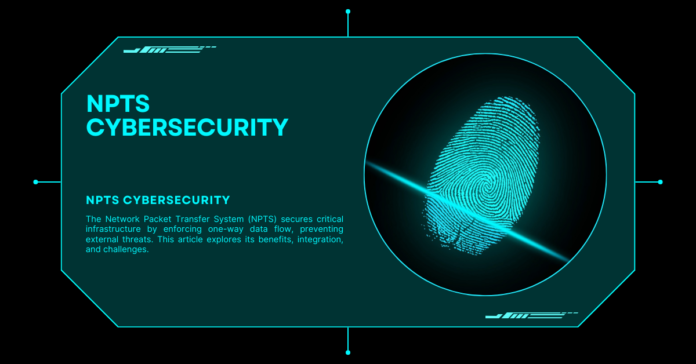The Network Packet Transfer System (NPTS) is a highly developed cybersecurity measure that helps secure critical infrastructure and high-security environments by ensuring data communication in a safe, unidirectional way. The effectiveness of this system is that it can prevent strangers from intruding secure networks by arranging data flow in one specific direction which in turn leads to not only decreasing the data risks but also the number of cyber-attacks. The real essence of comprehending NPTS’s role lies in a detailed examination of its technical specifications, restrictions, and applicability to diverse industries.
How NPTS Works
NPTS employs a data diode architecture to enforce one-way data flow, which effectively isolates sensitive operational technology (OT) from external or less secure networks, like IT systems or the Internet. By keeping these networks separate, NPTS minimizes the potential for cyber-attacks aimed at critical systems such as electrical grids or government networks. The system operates by actively capturing raw Ethernet packets from the source, directing them through the data diode hardware, and reassembling them on the other side.
This architecture ensures continuous network visibility for monitoring purposes, while protecting critical systems from cyber threats, ensuring data remains safe and accessible in real-time
Technical Depth: Protocol Security and Data Integrity
NPTS supports various communication protocols, including TCP, UDP, and file transfers, enabling the transmission of different types of data, such as real-time network traffic and system logs. However, ensuring the confidentiality and integrity of this data during transmission requires implementing strong encryption methods (like AES-256) and packet authentication mechanisms. These techniques guarantee that data remains unreadable if intercepted, and its integrity remains intact throughout the transfer process.
To prevent tampering, NPTS should integrate checksum or hash-based verification, ensuring that any unauthorized modifications to the data are detected before delivery
Potential Vulnerabilities and Limitations
While NPTS significantly reduces many cybersecurity risks, there are areas where potential vulnerabilities exist:
Configuration Issues: If improperly configured or maintained, the security features of NPTS could be compromised. Human error or insider threats can pose risks, even with a well-designed system.
Unidirectional Flow Constraints: Many operational environments, such as those using industrial control systems, rely on bidirectional communication. NPTS’s unidirectional flow can be a limitation when two-way communication is needed for feedback loops, such as real-time control or monitoring adjustments
.
Tailored Use Cases: Industry-Specific Threats
While the article broadly addresses industries like energy and defense, more specific examples would better illustrate NPTS’s benefits. For instance:
- Energy Sector: Ransomware or directed attacks on SCADA (Supervisory Control and Data Acquisition) systems can be very serious, with a large number of services becoming unavailable. The NPTS system employs tactics to isolate OT systems from corporate IT networks. Within this strategy, they are, to some extent, reducing exposure to external threats.
- Healthcare Sector: Medical systems are increasingly vulnerable to cyber threats. NPTS can protect sensitive patient data and secure medical equipment from ransomware attacks, ensuring uninterrupted healthcare services
Integration and Scalability Challenges
The integration of NPTS with Security Information and Event Management (SIEM) systems and Intrusion Detection Systems (IDS) is a major benefit, but there are challenges to consider:
- Complex Integration: SIEM systems are prone to generating a high volume of false positives, especially in large-scale deployments. Without proper tuning, NPTS might flood security teams with unnecessary alerts, making it harder to identify actual threats.
- Scalability: While NPTS is capable of high-speed data transfers up to 10 Gbps, its suitability for smaller organizations or those handling lower volumes of data is not clear. For mid-sized or smaller critical infrastructure providers, scaling down the system might involve complexity in terms of cost, hardware, and technical expertise
.
Compliance with Industry Standards
One crucial aspect missing from the original discussion is how NPTS helps organizations meet regulatory standards. Many industries are required to comply with frameworks like:
- NERC-CIP for power grids,
- HIPAA for healthcare,
- ISO 27001 for general data security.
By ensuring that NPTS aligns with these regulatory frameworks, organizations can maintain their compliance while securing their critical systems. This helps mitigate the risks of non-compliance fines and other legal liabilities
Return on Investment (ROI) Considerations
One missing element from the original article is a discussion of return on investment (ROI). Decision-makers need to assess whether NPTS offers a cost-effective solution for their cybersecurity needs. The ROI of NPTS can be illustrated through:
Reduced Downtime: By preventing cyber-attacks that could disrupt essential services, NPTS helps avoid costly operational shutdowns. For industries like energy or finance, even a brief outage can result in substantial financial losses.
Operational Efficiency: For environments that only require one-way data transfers, NPTS can reduce operational complexity, offering a cost-saving advantage compared to traditional bidirectional systems that are more expensive to secure
.
Conclusion
NPTS provides an essential solution for securing critical infrastructure and sensitive environments from cyber threats, utilizing unidirectional data flow to ensure maximum protection. However, it’s important to address key aspects like its encryption methods, integration challenges, scalability, and compliance with regulatory standards. Decision-makers will also benefit from a better understanding of the system’s limitations and cost-effectiveness to fully evaluate NPTS’s applicability in different industries. By making these adjustments, the article can better convey the value of NPTS as a cybersecurity solution tailored to diverse operational needs.


